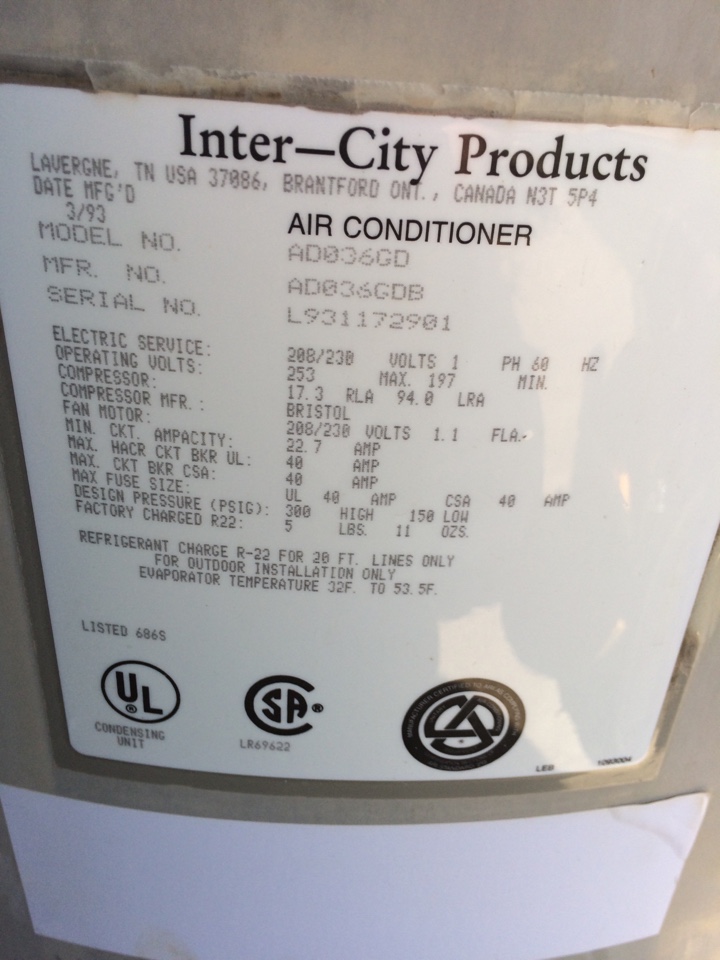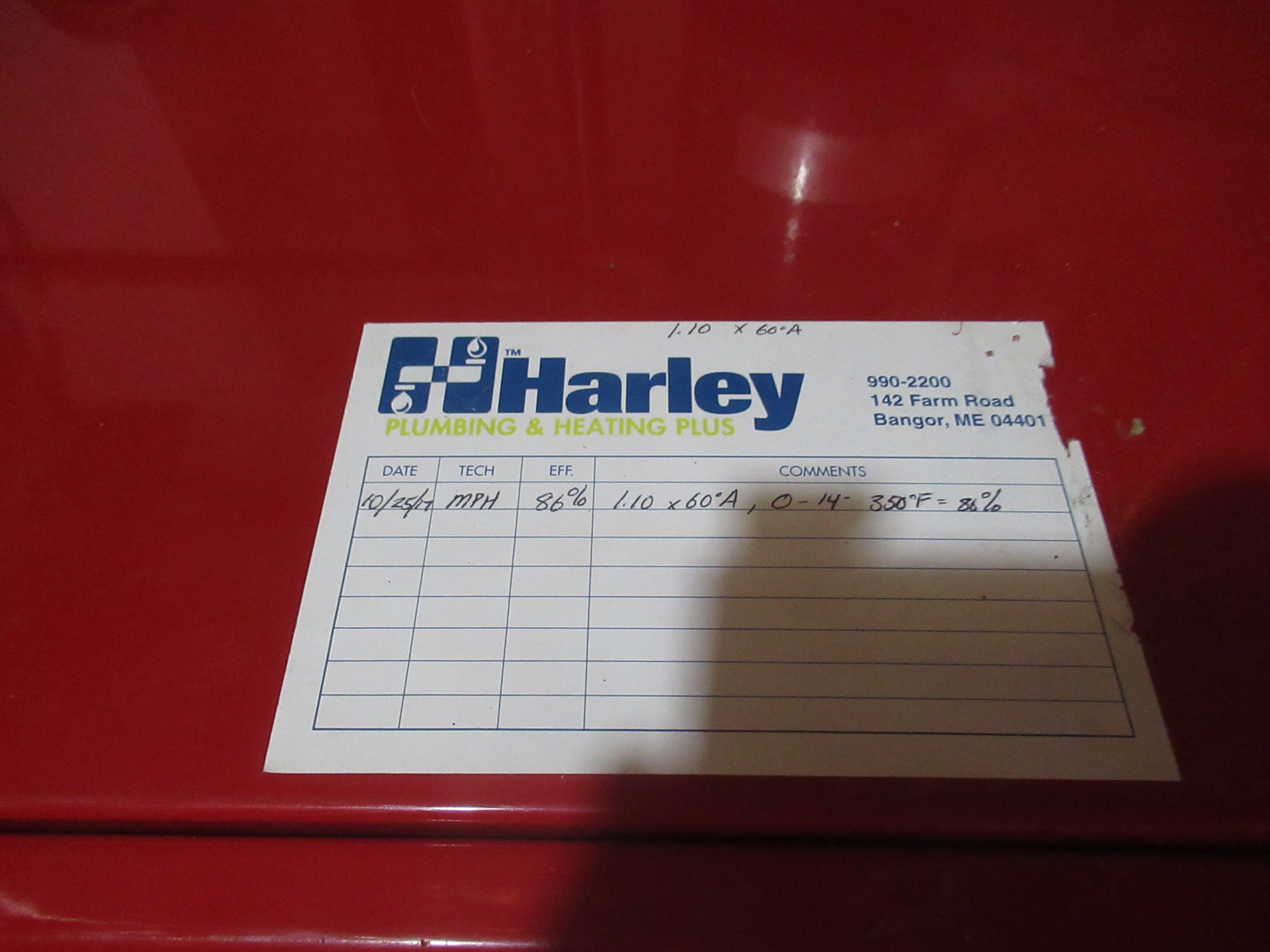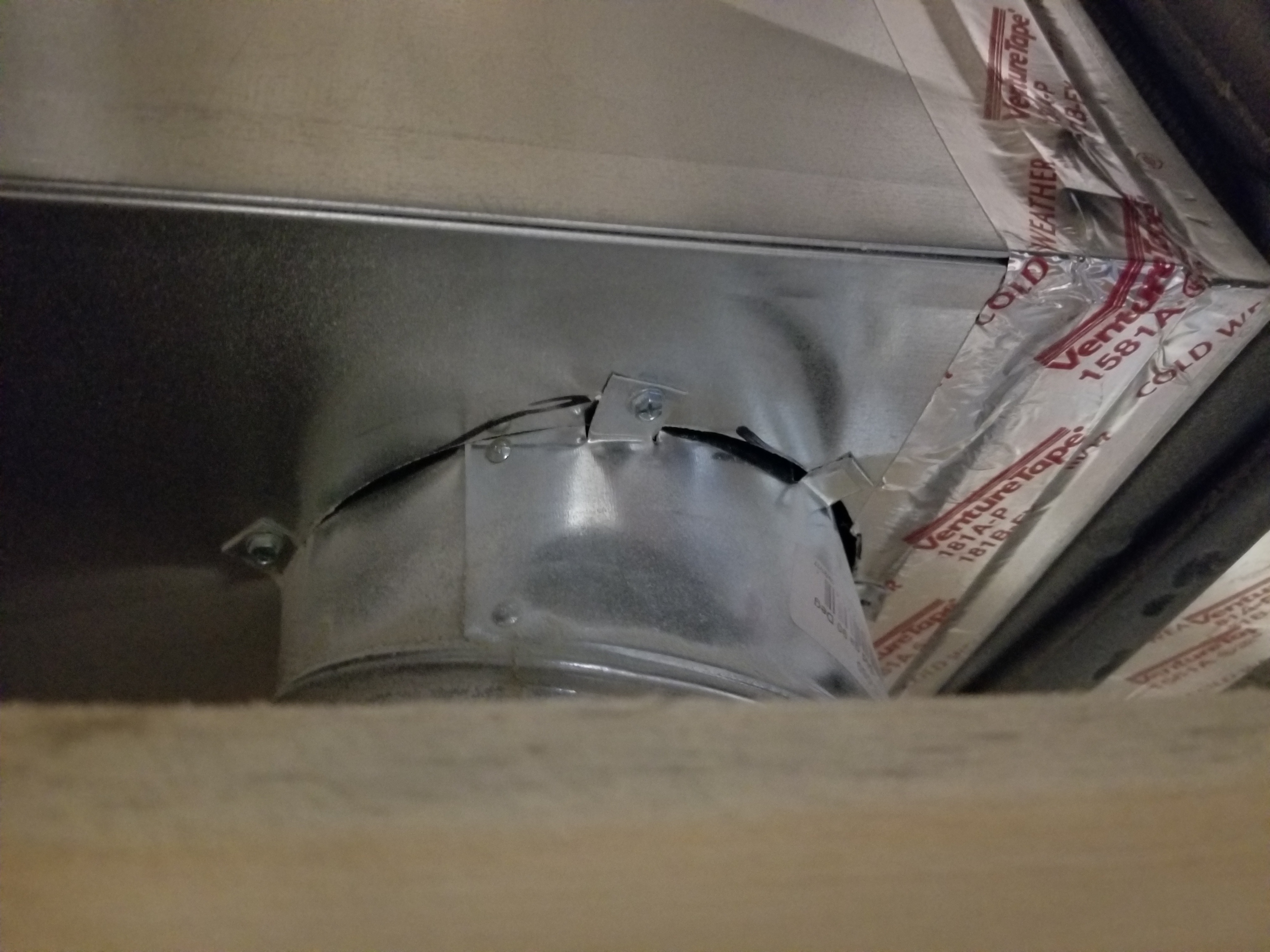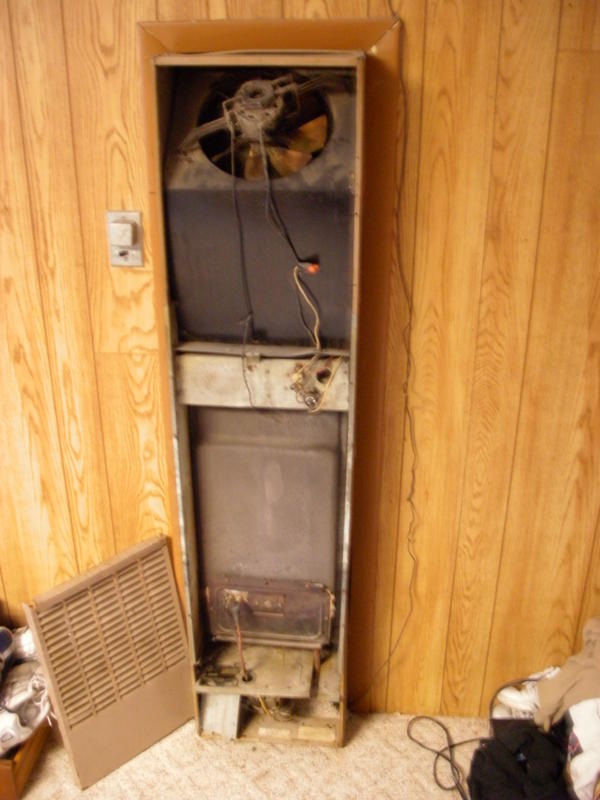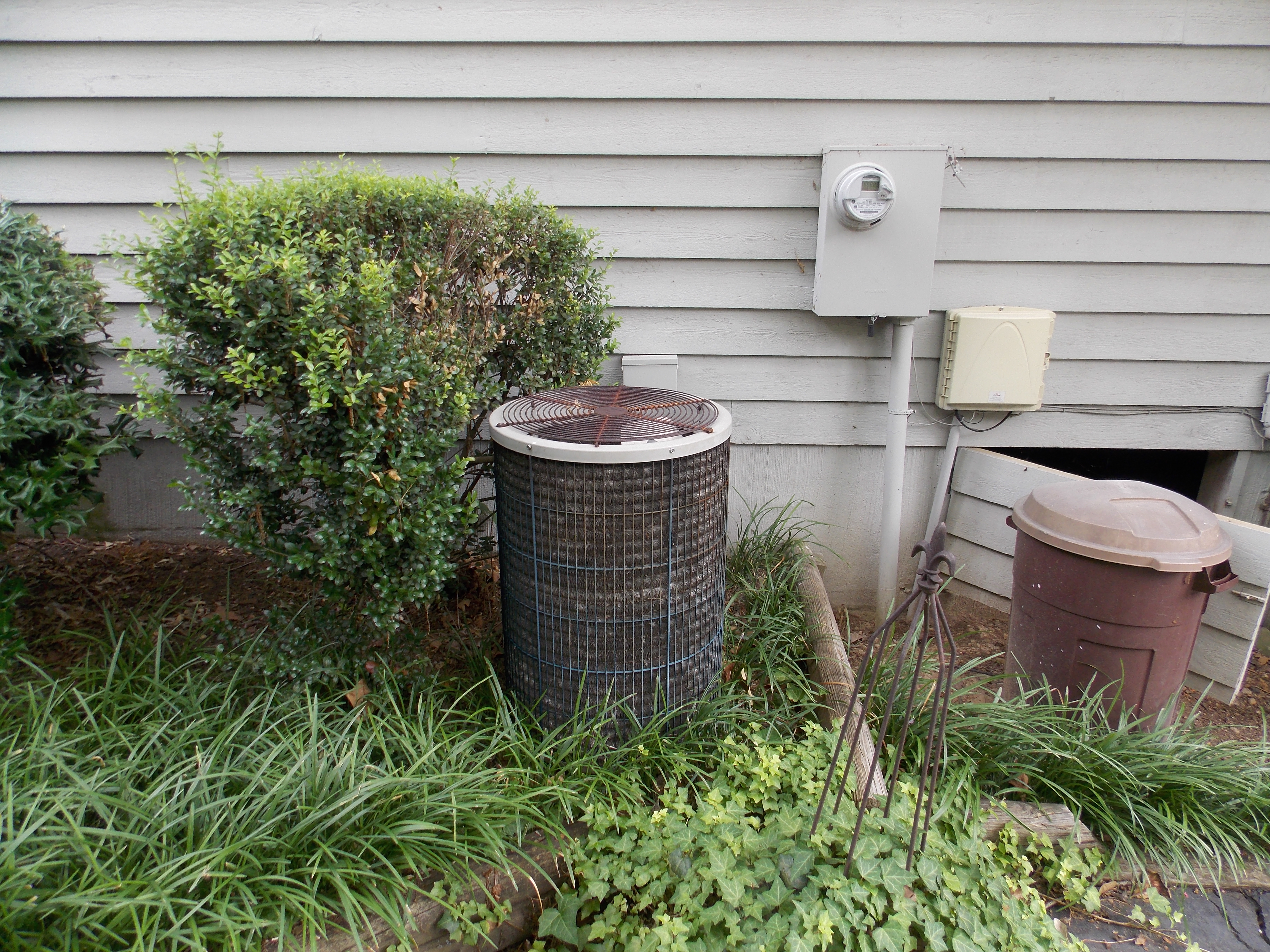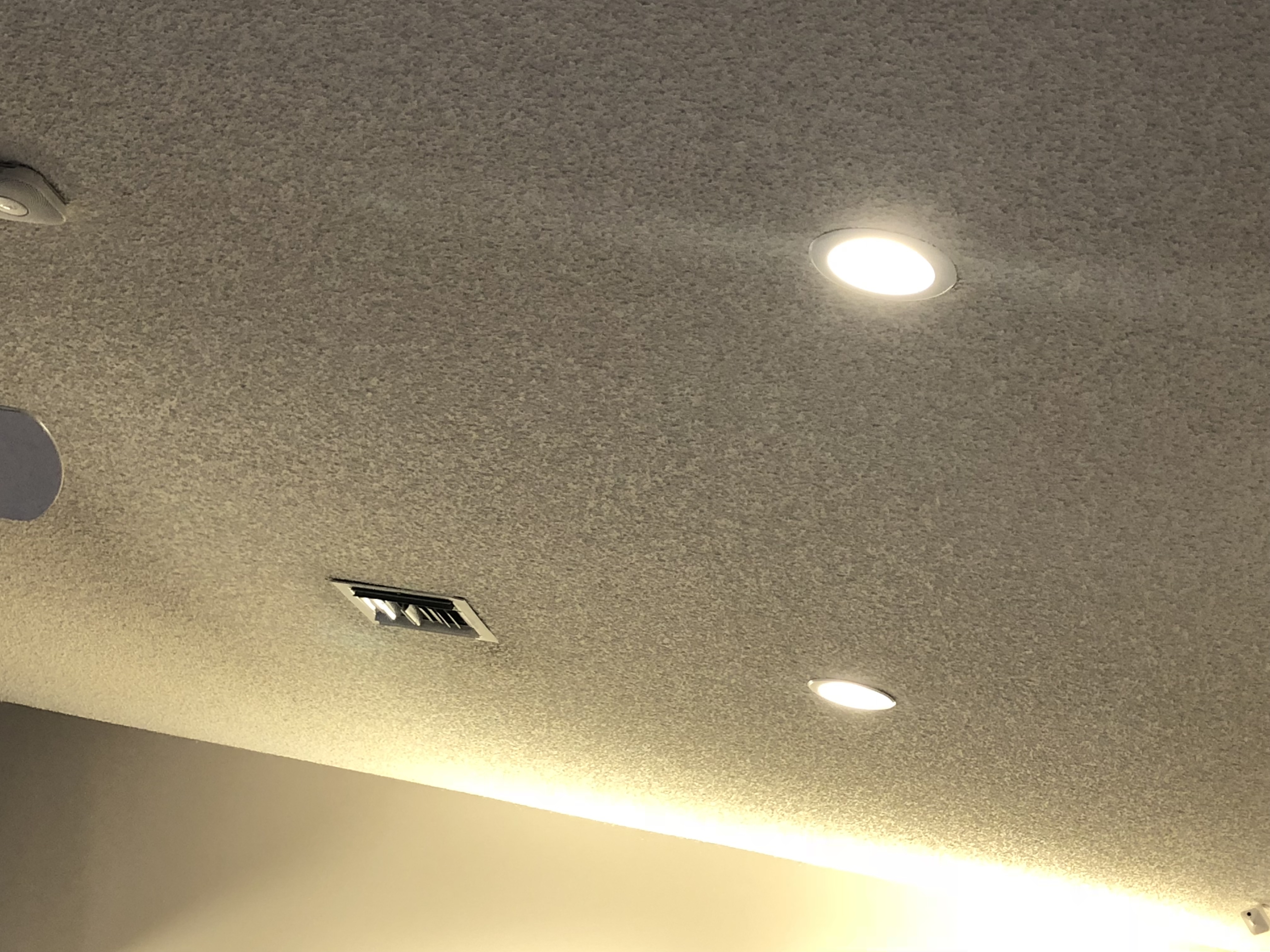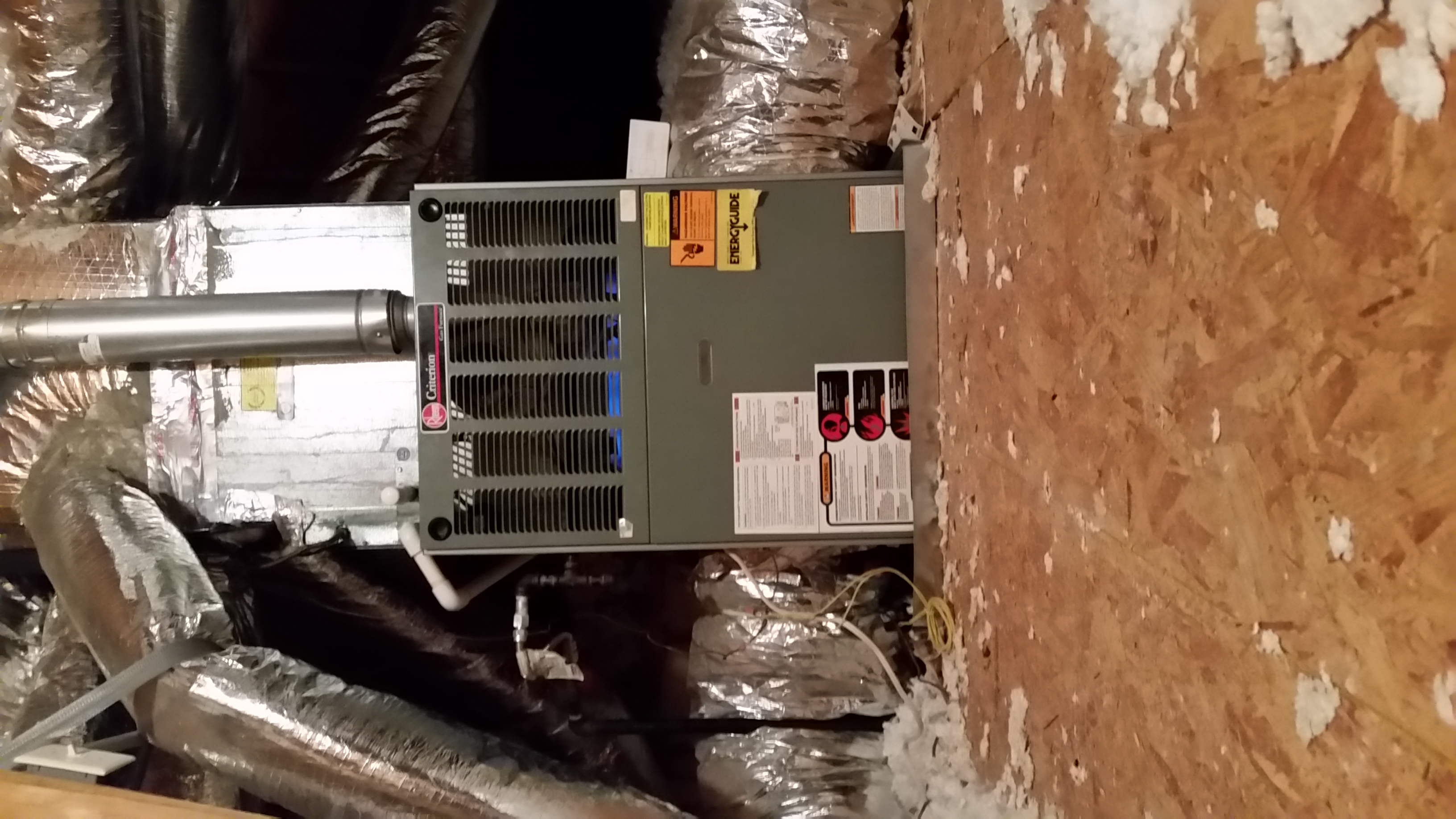An energy rating of your home is performed by an auditor. First an assessment is performed to evaluate the condition of the home and operation and safety with the owner. Second, energy efficiency upgrades are recommended. Upon completion, testing is performed often using a blower door test to inspect for air leaks.
The is a picture of the data plate on the outside condenser. The model number is AD036GD. The number 36 in the model number indicates that it is a 36,000 BTU unit. This indicates that it is a 3 ton unit.
Evaporative Coolers are also sometimes referred to as swamp coolers, wet air coolers or dessert coolers. These coolers work by passing air through water soaked pads that line the usually square cooler. This cools the air and is then blown into the home. Because we are blowing air into the home there must be a way for air to escape the home. This could simply be through an open window. If a path for the air is not provided the house would become pressurized. This cooler air can be at a relative humidity of 80% - 90%. So, be aware the added humidity can have a negative effect on you house and its contents.
The data plate on the unit shows that it is was made in 1994 and is a 2 ton cooling unit and uses R-22 refrigerant. Due to the age it is recommended that the unit be replaced soon. The refrigerant will cease to be made in 2020, and much more energy saving units are available.
Heat Recovery Ventilators (HRV) have the following advantages.
Most effective regardless of house airtightness.
Applicable in all climate zones.
Known source of ventilation air.
Less likely to affect combustion appliance venting.
HRV or ERV technology can recover up to 70% of heat.
Have opportunity to filter and temper fresh air.
I have a HRV unit in my home and we have noticed the difference in air quality since installing the unit.
According to the disclosure, the heating system was cleaned in 10/17. This was confirmed by service tag on boiler. I recommend that the heating system be inspected and serviced before the next heating season, and annually thereafter, by a qualified HVAC contractor. I also recommend the client consider having a service plan for the heating system.
According to the service label on the boiler, when the heating system was last cleaned and serviced on 10/25/17 the efficiency rating was 86%. For more information on the efficiency rating of a boiler or furnace, visit the U.S Department of Energy website.
I read the article “Increasing Home Energy Efficiency” in the InterNACHI library. The article explains how homeowners can reduce the amount of energy required by their homes. It also explains the financial incentives for increasing the energy efficiency of a home. Adjustments include adding insulation to the building envelope, insulating heating ducts, installing ceiling fans, replacing filters in air conditioners and heaters, setting thermostats to an appropriate temperature, installing programmable thermostats, and installing a wood stoves or a pellet stove.
The article also explains what homeowners can do to reduce the energy required for electronics and appliances. This includes reducing energy consumption by replacing light bulbs and lighting fixtures with more energy efficient types.
The article also addresses how to save energy with less wasteful ways of cooking and sealing holes and cracks in the home’s envelope, and conserving water consumption.
The article provides a good overview on what homeowners can do to increase the energy efficiency of their home.
Ductwork that is not properly installed can cause excessive leakage of conditioned air. The idea behind a sealed duct system is to move and remove the conditioned air throughout a home. If parts of it are not installed correctly it can cause issues.
Sealing your ductwork with mastic after or during instillation can greatly reduce issues with comfort. Excessive leaks can put undo stress on the HVAC system and its performance. If a duct system was created with a Manual D and is correctly sized it must be sealed to work properly.
The image Im viewing is of an exterior wooden casement window. The glass panes have been replaced with plywood. The wooden frame is completely bare and the panes have blistering paint. The stile and rails are separating at the joints. There are defects here which need to be further evaluated by a professional for energy efficiency upgrades. This will help with energy savings and keeping heating and ventilation at a comfort zone.
This is an image of a wall furnace completely disassembled. It is old, rusted and appears the motor is improperly wired. There is a wire running up along the right side and not sure what the function is. There is combustible items stored nearby and should be removed. There are defects here which need to be further evaluated by a professional for options and costs. This will help with proper heating of the home and comfort.
Windows are the largest opening in the home. New construction has newer codes as well as installation techniques that help ensure energy efficiency and minimize air leakage. On older homes, however, windows can be a source of wasted energy. Not only will the glass area be less efficient, but there will likely be air infiltration. New, properly installed windows will eliminate air leakage by filling the gap between the window and framed opening, typically with spray foam insulation. Also, new energy efficient windows will typically have a dense gas (argon or krypton) between the panes, effectively insulating the window to keep the conditioned air in the home and reducing the load on the HVAC system.
I read the article regarding passive solar design. Much can be accomplished with design of the home and landscape to make the home as efficient as possible before the HVAC system is even approached. First, shade trees on the south and west facing sides of the home will greatly minimize excessive heat in the summer. Also, lighter color roof materials will reduce summer heat. If there are no shade trees present, white or light colored interior window shades will help to reflect the hot summer sun before the heat can warm up the home’s interior.
HVAC System- What is needed to for your HVAC system to run correctly?
- Be properly sized and have all the rooms calculated for heating and cooling loads
- Have sealed supply ductwork that will provide proper air flow.
- Properly sized with a return system
- Have a sealed duct work
- Maintain a neutral pressure in the home
- Have proper charged refrigerant liquid. About 75% is installed incorrectly.
FURNACES- About 65% of homes in the United States have a central forced-air furnace that distributes heated air throughout the house via duct work. Over two-thirds of these are actually fueled by natural gas; other heat sources used are electricity, oil, and propane. So how can you can save money? Buying a new one can result in significant cost savings.
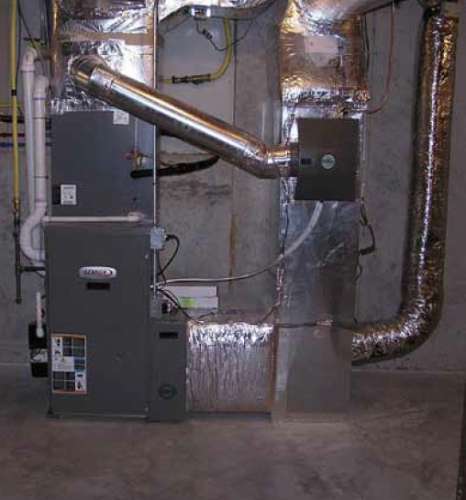
Seasonal energy efficiency ratio. … The SEER rating of a unit is the cooling output during a typical cooling-season divided by the total electric energy input during the same period. The higher the unit’s SEER rating the more energy efficient it.
Seasonal energy efficiency ratio. … The SEER rating of a unit is the cooling output during a typical cooling-season divided by the total electric energy input during the same period. The higher the unit’s SEER rating the more energy efficient it.
In this picture I am showing the recessed lighting. These lights are sealed for maximum energy savings. Normal reses lighting can create a major energy leak if no treated properly. Also in this picture is a air duct that was recently installed.
In the image I chose to talk about is and image of a attic access. My attic access has not been properly sealed. after taking this course I realized that proper insulation of all spaces is crucial to energy efficiency.
I found the article, “Inspecting the HVAC system for Duct Leaks and Energy Loss” to be very interesting. Ducts that leak can dump conditioned air into attics and crawlspaces, or pull in air from these same types of spaces. Both outcomes waste energy, thus reducing the amount of heated or cooled air that reaches it destination.
